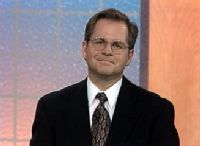

$74.00
Increased interest in the shoulder has led to enlightened research, increased knowledge, improved awareness of shoulder disorders.
Description
The shoulder complex is one of the most intriguing and exciting research and clinical practice areas in orthopedic and sports physical medicine. Increased interest in the shoulder has led to enlightened research, increased knowledge, improved awareness, and enhanced critical thinking regarding our recognition and treatment of shoulder disorders.
Course Details
| Instructor(s) | |
|---|---|
| Course Length | |
| Platform |
Details
Run Time: 4 hours
Attendee: Physical Therapists, PTA’s, Students, Athletic Trainers
Required Equipment: Personal Computer, Tablet, or Smartphone with access to Broadband Internet (<1.4 mbps)
Examination: Two (2) 20-question and 15-question module Quizzes. Passing grade of 70% or higher on each required for certificate
Course Evaluation: Yes
Certificate of Completion: Yes
Workbook/Handout: Yes
Course Approvals/Certifications:
Outline
Unit 01: Introduction and Biomechanics of Throwing
Unit 02: Kinematics and Kinetics of Throwing
Unit 03: EMG Analysis During Pitching
Unit 04: Pitching Compared to Football and Windmill
Unit 05: Pathomechanics
Unit 06: Anterior Laxity
Unit 07: Common Pathologies
Unit 08: Common Pathologies 2
Unit 09: SLAP Lesions – Patient History – Exam
Unit 10: Laxity Tests
Unit 11: Non-Operative Treatment
Unit 12: Non-Operative Treatment Part 2
Quiz: Module INot completed: Quiz: Module I
Topic 2
Module II
Unit 13: EMG Analysis of Exercises
Unit 14: Exercises
Unit 15: Exercises Part 2
Unit 16: Exercises Part 3
Unit 17: Surgical Procedures
Unit 18: Post Operative Guidelines
Unit 19: Post Operative Guidelines Part 2
Unit 20: Case Study 1
Unit 21: Case Study 2
Unit 22: Case Study 2
Final Test
Certificate of Completion
Course Evaluation
Learning Goals
Upon completion of this class, you should be able to:
- Describe how a thorough understanding of anatomy relates to providing accurate and effective therapies
- Identify anatomical structures of the shoulder, hip, and pelvis

